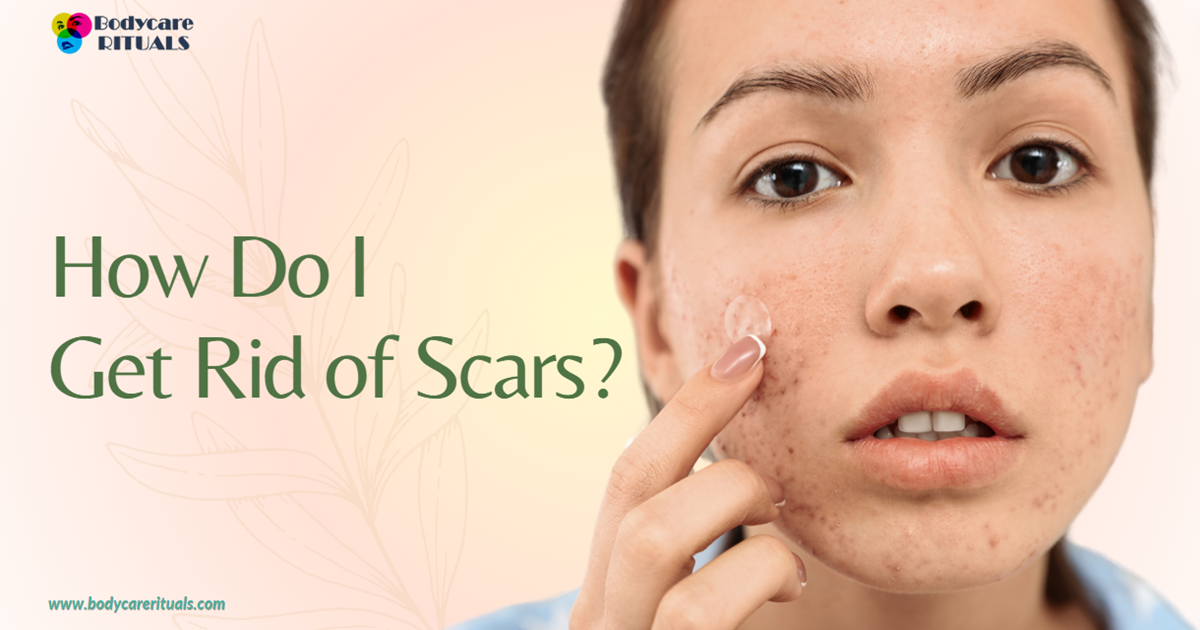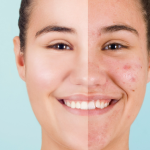Before we start to answer, how do I get rid of scars? We should begin to determine what a scar is and what the types of scars are. We often have scars on our bodies; those pesky reminders of past wounds can often linger long after the injury has healed. Whether it’s from acne, surgery, or an accident, scars can impact not only our physical appearance but also our self-confidence.
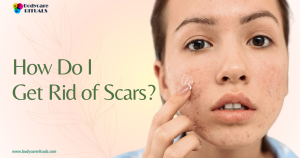 Don’t worry. Scars can be diminished or reduced to a negligible size but it depends on the type of scar. Confused? Let us find out all about scar removal treatment. From understanding what scars are to exploring the different types and finally discovering effective treatments, we’ve got you covered. Say goodbye to hiding behind long sleeves or layers of makeup, and let’s start the journey toward smooth, scar-free skin together!
Don’t worry. Scars can be diminished or reduced to a negligible size but it depends on the type of scar. Confused? Let us find out all about scar removal treatment. From understanding what scars are to exploring the different types and finally discovering effective treatments, we’ve got you covered. Say goodbye to hiding behind long sleeves or layers of makeup, and let’s start the journey toward smooth, scar-free skin together!
What are scars?
Whenever your skin is injured – whether by accident or from surgery, your body works to repair the wound. As your skin heals, a scar may form. This is a natural part of the body’s healing process. Scars are the body’s natural response to injury or trauma, serving as a protective barrier during the healing process. When the dermis (the thick layer of skin beneath the surface) is damaged, the body produces collagen fibers to repair the wound.
However, this repair process can sometimes lead to the formation of a scar, which differs in appearance and texture from the surrounding skin. While scars are a normal part of the healing process, their appearance can vary depending on factors such as the depth and severity of the injury, skin type, and genetic predisposition.
Types of Scars
Understanding the different types of scars is crucial to determining the most effective treatment approach. Here are some common types of scars:
Keloid scars: If you have a scar from an injury, it’s most likely a keloid scar. Firm and either pink or dark red, keloid scars also extend beyond the area of the initial injury. Unlike most of the common scars, keloid ones don’t usually fade away with age. Keloids extend beyond the boundaries of the original wound and continue to grow over time. They are characterized by their raised, thickened appearance and can be itchy or painful.
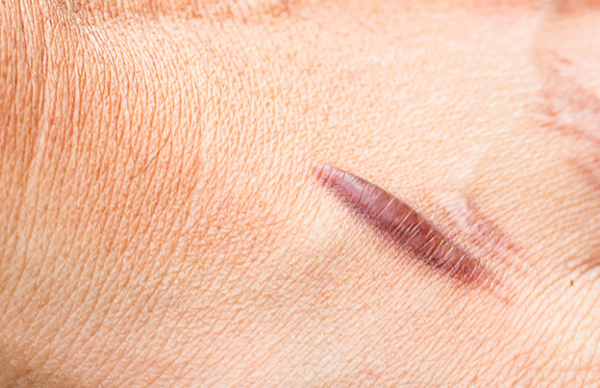
Hypertrophic scars: If your scar looks like a keloid scar but doesn’t go beyond the affected area, it’s most likely a hypertrophic scar. Raised and often red, hypertrophic scars are commonly mistaken for keloid scars but are easier to treat, according to the American Academy of Family Physicians. They typically occur when there is an overproduction of collagen during the healing process. Hypertrophic scars remain within the boundaries of the original wound and may gradually fade over time.
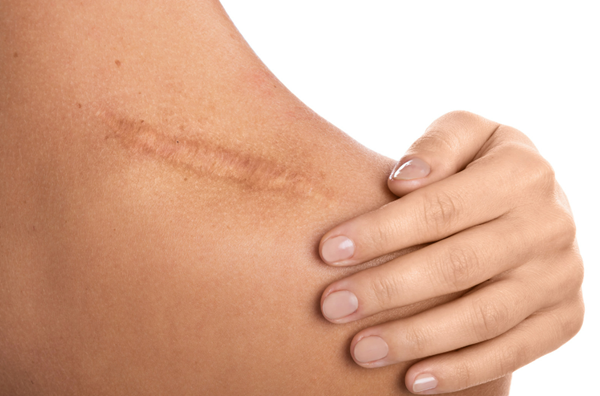
Contracture scars: If you suffer a severe burn and it leaves a scar, it leads to tight, pulling sensations. Contracture scars are often deep and can tighten the skin, sometimes restricting movement and affecting underlying muscles and nerves.
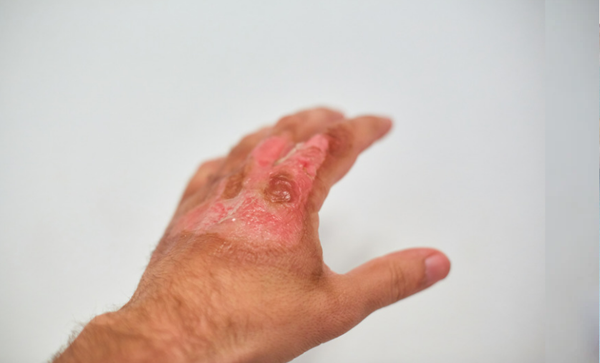
Atrophic Scars: If you’ve experienced severe acne, your skin may be left with acne scarring. These are permanent textural changes and indentations left on the skin as a result of a serious acne breakout. Also known as depressed scars, atrophic scars appear sunken or indented in the skin. They often result from a loss of underlying tissue, such as in the case of acne or chickenpox scars.
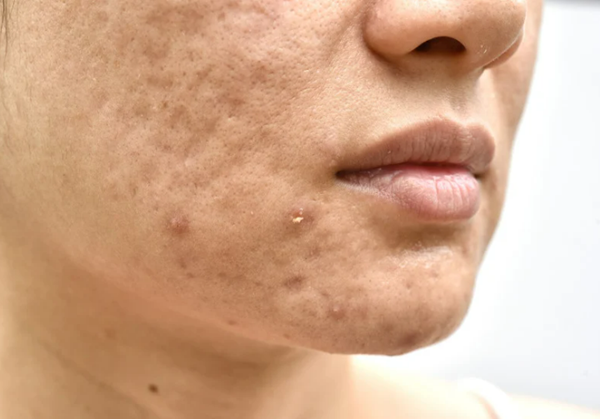
As mentioned before, you cannot make a scar disappear completely, but you can diminish it. Choosing the best treatment for a scar depends on understanding the type of scar you have.
How Do I Get Rid of Scars?
Now that we’ve covered the basics of scars, let’s explore some effective methods for scar treatment:
Topical Treatments: Over-the-counter creams and gels containing ingredients such as silicone, vitamin E, and onion extract can help reduce the appearance of scars by hydrating the skin and promoting collagen production.
Microneedling: Often known as Derma Rollers, this minimally invasive procedure involves using a device with fine needles to create tiny punctures in the skin, stimulating the body’s natural healing response and promoting the production of new collagen and elastin.
Surgical Revision: In cases where scars are particularly deep or extensive, surgical procedures such as scar excision or skin grafting may be necessary to remove the scar tissue and improve the overall appearance of the skin. Surgically removing a scar is the most invasive type of treatment. Your doctor may recommend a surgeon to evaluate your scar and perform a procedure to make it less visible. For instance, a surgeon can reduce the size of a wide scar or take skin from another part of your body to place it over the scarred area.
Laser scar removal: Laser treatments, such as fractional laser resurfacing and pulsed dye laser therapy, can target specific layers of the skin to stimulate collagen production and improve the texture and appearance of scars. For surgical scars in particular, laser scar removal is an effective, noninvasive option for scar treatment. Doctors use intense light to reduce the size, color, and shape of a scar. Different kinds of laser removal are more effective in treating one type of scar than another.
Cryotherapy: It’s a relatively recent development that uses a double-lumen needle, placed through the core of a keloid or hypertrophic scar, to deliver nitrogen vapor, which freezes the scar from its core, outwards.
Steroid Injections: For hypertrophic and keloid scars, corticosteroid injections can shrink the size of the scar and make it even with the surface of your skin. It can help flatten and soften the scar tissue by reducing inflammation and inhibiting collagen synthesis. Other types of injections include dermal fillers or collagen, which fill in the area around a deep scar.
Post-surgery Surgery methods
Often, simple surgery or other treatments may not help those predisposed to keloid formation. Some individuals tend to have a high recurrence rate after surgery. This is because the surgery scar may develop an even larger keloid. Don’t worry, if you combine the surgery with these therapeutic methods, the chances of keloid scars developing again drastically reduce
- Corticosteroid Injections: If a hypertrophic or keloid develops after surgery, doctors recommend getting steroid injections every four to six weeks, limiting the total number of injections to five. The procedure takes about 15 minutes, and often no anesthesia is required.
- Pressure garments/therapy: To be worn for 23 hours a day in the low range for treating persistent hypertrophic burn scars and keratoses.
- Radiotherapy: Radiations are used for recurrent keloids, or patients with a high risk of recurrence, in wider spread, and unfavorable locations. The most effective technique is to start radiation on the same day after the surgical removal of the keloid.
While scars may seem like permanent reminders of past trauma, there are numerous treatment options available to help minimize their appearance and restore confidence in your skin. Whether you opt for topical treatments, laser therapy, or surgical intervention, finding the right approach for your specific type of scar is key to achieving optimal results. So don’t let scars hold you back any longer—take the first step towards smoother, scar-free skin today!

